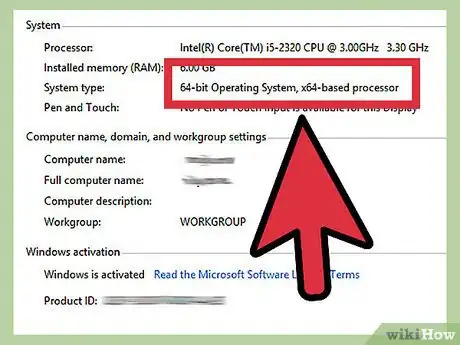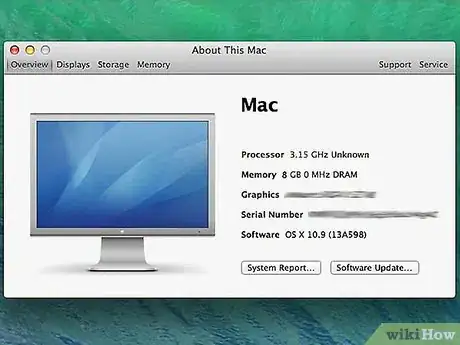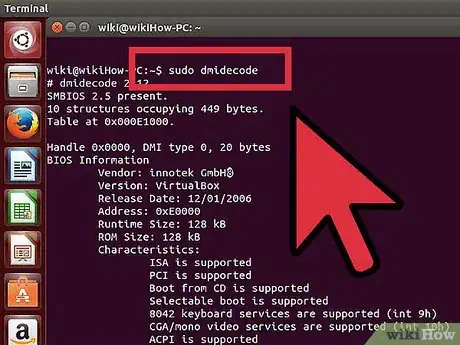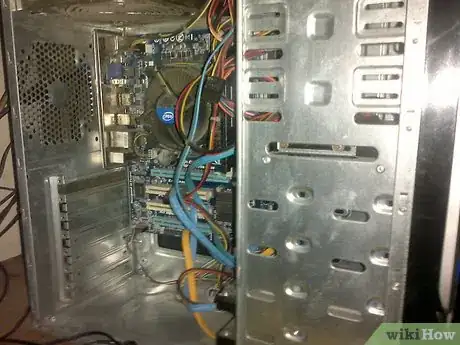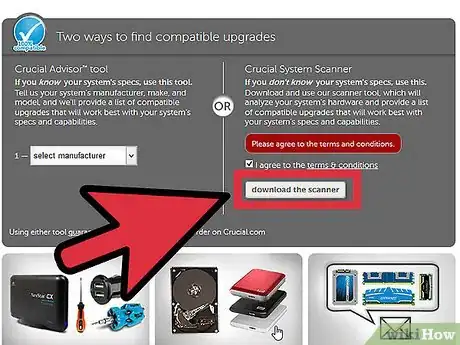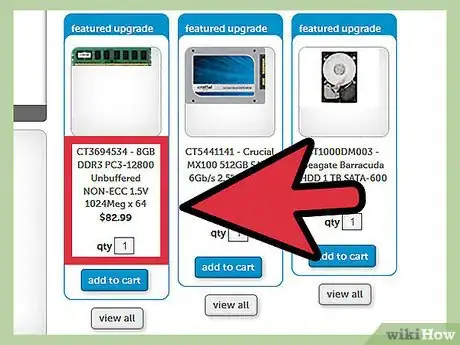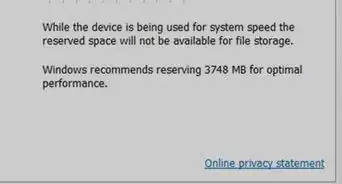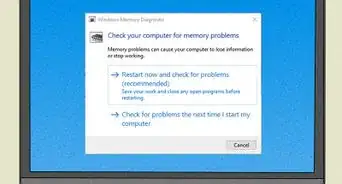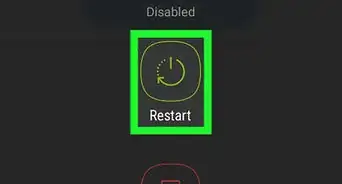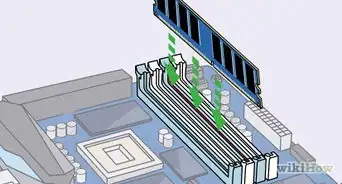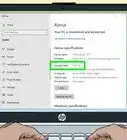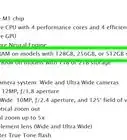wikiHow is a “wiki,” similar to Wikipedia, which means that many of our articles are co-written by multiple authors. To create this article, 13 people, some anonymous, worked to edit and improve it over time.
The wikiHow Tech Team also followed the article's instructions and verified that they work.
This article has been viewed 576,841 times.
Learn more...
RAM (Random Access Memory) is the memory that your computer uses to store data from programs that are in use. Generally, the more RAM you have installed, the more programs you can run at once. The amount you can install, however, is determined by both your hardware and your computer's operating system. You will need to check both to figure out how much RAM you can add to your computer.
Steps
Checking Your Operating System
-
1Determine if Windows is 32-bit or 64-bit. The Windows operating system has a maximum amount of RAM that it will recognize. If you have more RAM installed than is allowed, the extra RAM will not be used. This limit is determined by whether Windows is 32-bit or 64-bit.
- See this guide for details on checking your copy of Windows. Generally you can see whether Windows is 32- or 64-bit from the System Properties window (⊞ Win+Pause)
- 32-bit can support up to 4 GB (for all versions) of RAM
- 64-bit can support up to 128 GB (Windows 10 Home) to 2 TB (Windows 10 Education, Enterprise, Pro) of RAM[1]
-
2Check your Mac model. The amount of RAM your Mac can support depends on the model you are using. Many Macs have differing amounts of supported memory. Check your Mac's documentation for exact numbers. Some of the more popular models include:[2]
- iMac (27-inch, Late 2013) - 32 GB
- iMac (2009-Late 2012) - 16 GB
- iMac (2006-2009) - 4 GB
Advertisement -
3Determine how much your Linux system supports. A 32-bit Linux installation may only support up to 4 GB, but if it has the PAE kernel enabled (most newer distributions do), then a 32-bit system can support up to 64 GB of RAM. A 64-bit Linux system can theoretically support up to 17 billion GB of RAM, though most cap out at 1 TB (Intel) or 256 TB (AMD64).[3]
- To determine the exact amount your system can support, open the Terminal by pressing Ctrl+Alt+T. Type sudo dmidecode -t 16. You will be asked for the administrator password. Look for the Maximum Capacity: entry.
Checking Your Motherboard
-
1Identify your motherboard. Even if your operating system supports a ton of RAM, you are still limited by what your motherboard can support. If you don't have access to your motherboard documentation, you will need to identify the motherboard and look up the specifications online.
- You will most likely need to open your computer case and note the motherboard's model number.
-
2Check the motherboard's documentation. Near the beginning of your motherboard's documentation, you should be able to find a specifications chart or page. Look for the maximum amount of RAM or System Memory that can be installed. You will also see the number of available slots on your motherboard.
- RAM needs to be installed in pairs. If your motherboard supports 16 GB of RAM and has four slots, you can install four 4 GB sticks or two 8 GB sticks to reach your maximum.
-
3Use a system scanning tool. If you are uncomfortable opening your computer or reading through your motherboard documentation, there are several tools available online that can scan your system and report how much memory you can have, as well as the type and speeds supported.
- You can find these scanners on major memory manufacturers' and retailer's websites, such as Crucial or MrMemory.
-
4Upgrade your RAM. After you determine how much RAM your system can support, you can install your new RAM. Make sure that if you are adding new RAM to existing RAM that the clock speed matches the original RAM. See this guide for detailed instructions for installing new RAM.
Community Q&A
-
QuestionCan I change my original RAM if I have only one slot for RAM in my computer?
 Community AnswerYes, but make sure you also know your operating system capacity. If you are using 32bit Windows, its maximum capacity is 4GB.
Community AnswerYes, but make sure you also know your operating system capacity. If you are using 32bit Windows, its maximum capacity is 4GB. -
QuestionThere are two slots in my PC. Can I install 4 and 8 GB RAM there? It is a 64 bit PC.
 Community AnswerYes, you can. Just make sure they are both the same type, speed, voltage, etc. Check that as much as possible is the same (except RAM amount) so it works. It takes lots of research.
Community AnswerYes, you can. Just make sure they are both the same type, speed, voltage, etc. Check that as much as possible is the same (except RAM amount) so it works. It takes lots of research. -
QuestionCan increasing the RAM on my computer make it work faster and not freeze?
 Community AnswerYes. But if it is still sluggish, remove unnecessary programs and data on desktop, and browser caches.
Community AnswerYes. But if it is still sluggish, remove unnecessary programs and data on desktop, and browser caches.
References
About This Article
If you’re using a Mac, search for your system model on the Apple website to find out the maximum amount of RAM it can handle. If you’re using a 32-bit version of Windows, your system can support up to 4 GB. If you’re using a 64-bit version of Windows, it can handle up to 128 GB.
